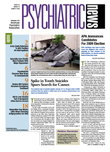The Part D Medicare drug program rejected over half of the seniors who applied for payment assistance based on either their income or the amount of assets they reported, according to a new federal agency report.
The report by the Government Accountability Office (GAO), released in September, examined the Low-Income Subsidy (LIS) or Extra Help program included in Part D when Congress approved the Medicare prescription-assistance plan in 2003. The LIS program was designed to help defray the cost of prescription drugs for beneficiaries with “limited means” and restricted the assistance program to beneficiaries whose assets and income were less than the thresholds established by the Medicare Prescription Drug, Improvement, and Modernization Act of 2003. The Social Security Administration is responsible for determining eligibility for the LIS.
In a report mandated by the 2003 Medicare Part D law, the GAO found that more than half of the 4.5 million beneficiaries who applied for LIS assistance in Fiscal 2006 were denied the subsidy. The report also found that about 56 percent, or 336,183 applicants, were denied the extra help in Fiscal 2007. The continued high rejection rate and other LIS findings indicate that many more seniors need help than are qualifying for assistance based on federal standards, according to critics of those standards.
“This GAO report shows that there continues to be problems with low-income beneficiaries getting the help they need with high drug costs,” said Rep. Henry Waxman (D-Calif.), chair of the House Oversight and Government Reform Committee, in a written statement following release of the report. “We need to take a hard look at the Part D asset test and make the necessary reforms so that the Medicare program is working effectively for our nation's seniors and ensuring they get the assistance they need.”
There were no reported findings that the LIS rejections were erroneous or that administrators did not follow the federal eligibility guidelines in denying applications.
To qualify for the LIS, applicants must be below the Part D income and asset thresholds, which for 2008 are $15,600 in income for individuals and $21,000 for couples, and assets of $11,990 for individuals and $23,970 for couples.
The LIS help can amount to substantial financial assistance. Generally, Part D beneficiaries are responsible for paying monthly premiums, an annual deductible, and copayments. Those who qualify for full LIS assistance pay no deductible or monthly premiums, and they are not subject to Part D's“ donut hole” or coverage gap in prescription-drug costs between $2,510 and $5,726.
The high rejection rate in the LIS program has helped limit the growth of the benefit.
The Centers for Medicare and Medicaid Services (CMS) reported that 9.38 million beneficiaries were receiving the LIS as of January, but most qualified automatically because they are recipients of Medicaid or Supplemental Security Income or because they are enrolled in a Medicare Savings Program. Only 1.53 million of the LIS recipients (about 16 percent) had applied for the subsidy and cleared its income and asset limits. CMS estimated that there were 2.6 million additional beneficiaries who were eligible for the LIS as of January but were not receiving it because they had failed to apply.
The report noted that although the rate of LIS rejection remained at over 50 percent in Fiscal 2006 and Fiscal 2007, the percentage of beneficiaries rejected because of income alone rose from 50 percent to 70 percent over those two years.
“Both assets and income were important factors in LIS denials, but more applicants were denied the subsidy because their income was too high than were denied it because their assets were too high,” according to the GAO.
Among those who were denied based on their assets, many exceeded the asset threshold by a relatively small amount. In both Fiscal 2006 and Fiscal 2007, more than a quarter of assistance applicants exceeded the asset threshold by less than $5,000.
Laura Summer, a senior research scholar at Georgetown University's Health Policy Institute, testified before a congressional committee in May that the LIS offers great potential for low-income beneficiaries to receive substantial help with Part D premiums and cost sharing.
“Although they are entitled to this financial assistance, however, millions of beneficiaries do not receive it,” she said.
Summer called for the elimination of the asset test in determining LIS eligibility. This would make the application process simpler and less time consuming for beneficiaries, as well as for those who assist them and those who process applications.
People who are rejected for LIS assistance also may seek help from some state and drug-manufacturer programs created to help low-income Medicare beneficiaries obtain prescription drugs. However, the report found that the availability of these programs and the assistance they offer are“ uneven.”
Twenty-three states offer state pharmaceutical assistance programs, which can supplement Part D benefits. Patient assistance programs offered by drug manufacturers also assist low-income individuals in obtaining prescription drugs, but the drugs are limited to those produced by the sponsoring manufacturers.
The GAO report is posted at<www.gao.gov/docsearch/abstract.php?rptno=GAO-08-824>.▪
